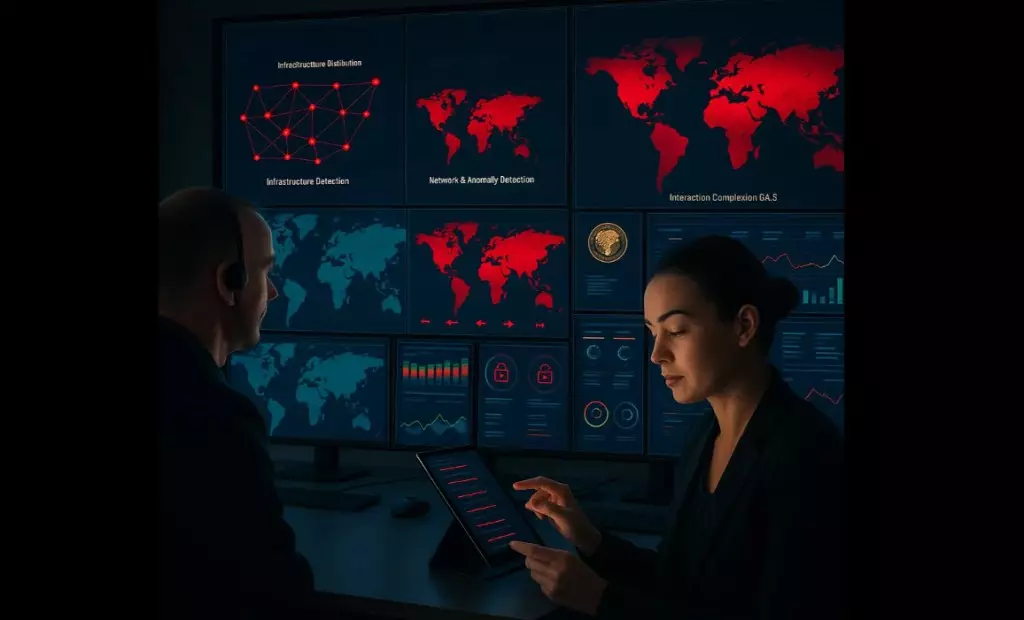The recent dismantling of DanaBot, a sophisticated malware operation hailing from Russia, underscores the impact of technology in reshaping Cybersecurity measures. Having infiltrated over 300,000 systems globally and extracted over $50 million in damages, this malware-as-a-service (MaaS) platform is a stark reminder of the vulnerabilities organizations face in the digital realm. Initially emerging as a banking Trojan in 2018, DanaBot’s evolution into a versatile toolkit utilized by cybercriminals speaks volumes about the adaptive nature of contemporary cyber risks. With the United States Department of Justice recently indicting 16 individuals associated with DanaBot, the takedown is a critical milestone in the ongoing fight against cybercrime.
DanaBot’s operational model featured an astonishing daily average of approximately 150 command-and-control (C2) servers, targeting nearly 1,000 victims across 40-plus countries each day. The malware’s stealth and agility were alarming; only a quarter of its C2 servers could be detected on platforms like VirusTotal. Such concealment highlights the increasing sophistication of cybercriminal tactics, which require equally advanced countermeasures.
Agentic AI: The Game-Changer
Amidst this chaotic landscape, agentic AI has emerged as a transformative force in cybersecurity. This intelligent system is not merely about automation; it represents a leap toward proactive threat detection and response capabilities. By harnessing predictive modeling, real-time telemetry analysis, and autonomous anomaly detection, agentic AI alleviates the burdens typically placed on human analysts. Years of extensive research and development have led to the creation of these intelligent systems, which now outperform static, rule-based methodologies.
The dismantling of DanaBot not only reflects the operational effectiveness of agentic AI but also validates its benefits for Security Operations Centers (SOCs). Through automated analysis, what once demanded months of painstaking forensic work was condensed into a matter of weeks, allowing law enforcement agencies to act decisively against this criminal organization. This shift marks a crucial pivot from traditional cybersecurity responses to a more intelligent, data-driven approach.
The Blurred Lines of Cybercrime
The nexus between cybercrime and state-sponsored activities is more pronounced than ever. DanaBot’s operations, which have been linked to Russian intelligence endeavors, expose the alarming conjunction of financially driven cybercrime and geopolitical espionage. This blending blurs the boundaries that once neatly separated the two sectors. The Kremlin’s apparent leniency towards SCULLY SPIDER, the operators of DanaBot, raises questions about state complicity. It exemplifies a strategic use of cyber proxies to conduct disinformation and destabilization campaigns under a veil of deniability.
As adversaries increasingly operate under the influence of agentic AI, the need for robust defenses becomes paramount. Cybersecurity professionals can no longer afford to rely solely on conventional measurements of protection; they must adapt to a landscape in which adversaries continually modify their strategies.
Societal Implications and New Opportunities
DanaBot’s downfall serves as a harbinger of the broader evolution occurring within the Cybersecurity landscape. Fortunately, this evolution presents new avenues for SOC leaders. As organizations invest in advanced AI tools and methodologies, they are beginning to realize the transformative benefits that these technologies can provide. Enhanced efficiency in threat detection, reduced analyst fatigue through context-aware automation, and improved response times are just the tip of the iceberg.
The advancement of agentic AI is particularly potent against persistent challenges like alert fatigue, which has plagued many traditional Security Information and Event Management (SIEM) systems. With false positive rates reaching up to 40%, many analysts have been inundated with irrelevant alerts, impeding their ability to focus on genuine threats. In contrast, AI-driven platforms such as Cisco Security Cloud and CrowdStrike Charlotte AI are set to revolutionize how analysts prioritize and investigate alerts.
Strategic Cultivation of Cyber Defense
As SOCs integrate more sophisticated AI tools into their operations, strategic foresight is indispensable. Key lessons from the DanaBot case reveal how cybersecurity teams can leverage agentic AI to gain a competitive edge. Starting with manageable tasks, integrating comprehensive telemetry, and establishing strict governance will yield significant dividends. Organizations should harness AI outcomes to influence metrics that resonate within and outside the SOC, ultimately catalyzing operational efficiency.
In an age where cyberattacks are executed with unprecedented speed, defending against these threats necessitates embracing technological advancements. DanaBot’s takedown exemplifies how the power of agentic AI can dismantle complex cybercriminal infrastructures, showcasing a pivotal moment in the continuous battle for digital security. The emergence of intelligent systems necessitates a comprehensive reevaluation of existing strategies, transforming the reactionary mindset into one driven by foresight and resilience.

